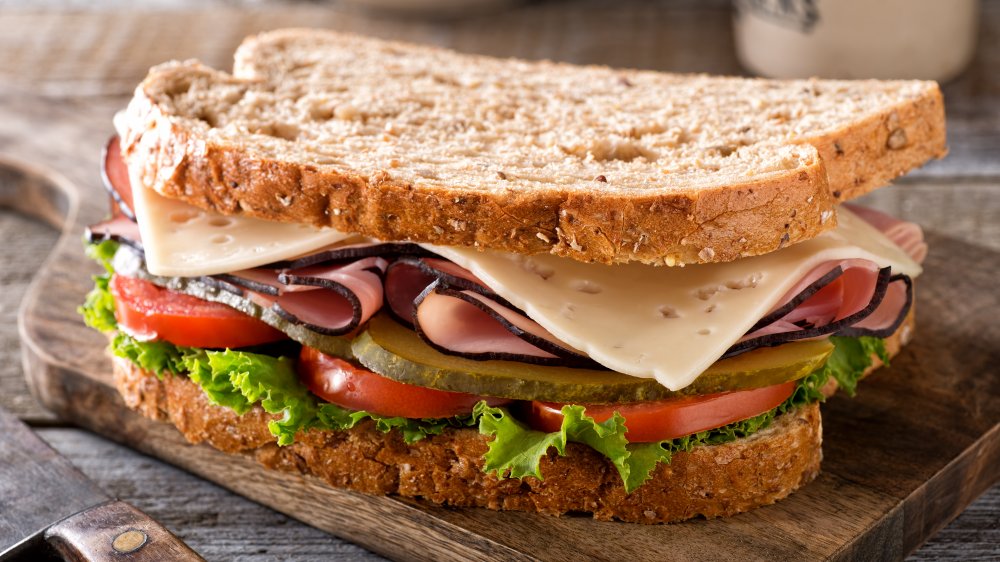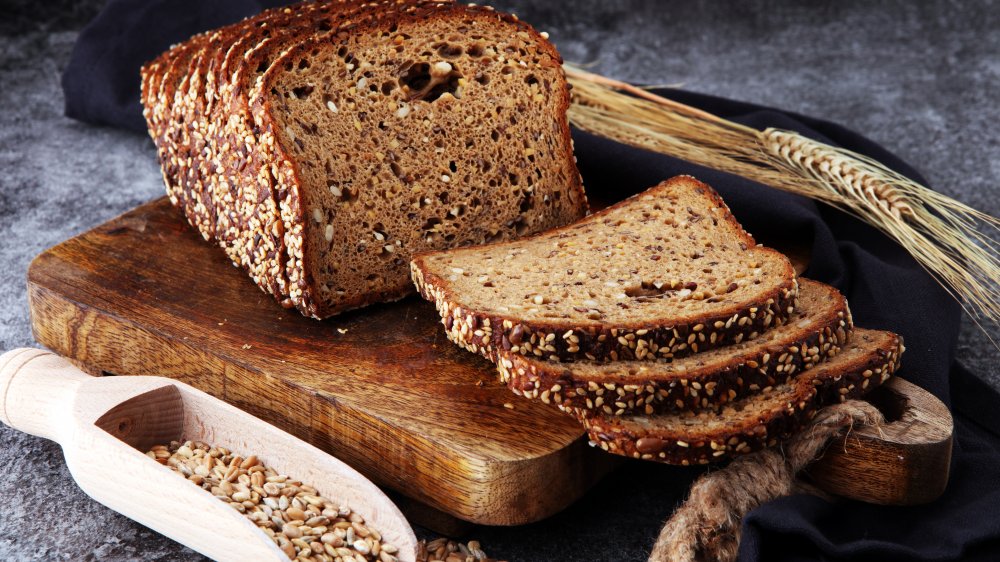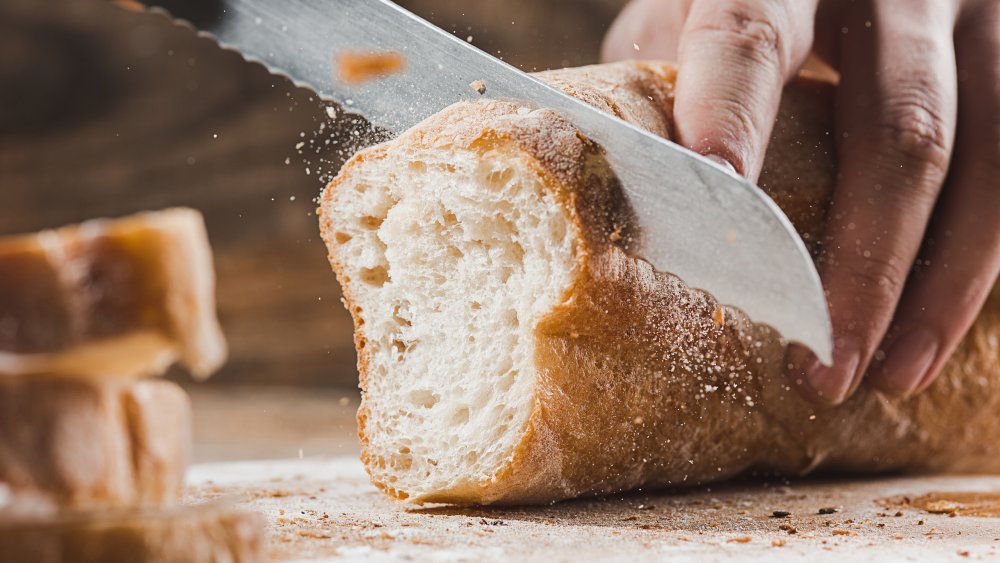Nutrition Expert Exposes The Truth About Whole Wheat Bread
Think about this as you sink your teeth into that soft, chewy sandwich: you might be making a big mistake. What's so alarming about a simple sandwich? For starters, it's the amount of processing that took a hearty whole grain and transformed it into a processed, nutrient-starved slice of dough. Never assume that your "wheat bread" is actually "whole wheat" (per Everyday Health). Food made with any kind of wheat flour can be labeled wheat. And when a label says made with "whole grain," that simply means there's some whole grain in there. It's hard to know how much.
Why care? Unless it's a whole grain slice of bread, the wheat was likely stripped of nutrients and no longer resembles its natural state in the field — a whole plant consisting of three parts: the bran (healthy outer layer), the germ (equally healthy inner core), and the endosperm, the not-as-healthy starch (per Harvard School of Public Health). According to the Mayo Clinic, whole grains aren't processed, so they have all their nutrients intact. Refined grains are finer in texture (and often more desirable for that ham and cheese sandwich), but they're missing nutrients and fiber, which keeps your blood sugar steady. Even enriched breads — the ones with vitamins and minerals added back in after processing — still lack the important nutrients found in the original whole grain (per Life Hacker).
The FDA didn't do it, so somebody else did
When it comes to product labels and the actual grain content of bread, the FDA hasn't clearly defined what manufacturers can claim. Instead of a clear and distinct message, they "recommend that products labeled with '100 percent whole grain' not contain grain ingredients other than those the agency considers to be whole grains." They recommend? Where's the enforcement? The FDA figures consumers will be able to decipher ingredients on packages to determine what's a whole grain and what's not — because, of course, we all have the time and training to interpret food labels.
Not to worry. The Oldways Whole Grains Council, recognizing that our U.S. government dropped the ball on tangible, whole-grain labeling regulations, devised a whole grain stamp, which clearly designates the whole grain content of foods. The program advises manufacturers to use the words "whole grain" only if the product has more whole grain than refined grain — even if it's just 51 percent, because more whole grain is better than none. If the product meets the criteria, it gets the stamp of approval. Truth in whole grain labeling. What a great concept.
Other ways to make sure you're getting whole grain bread
Aside from the stamp, how else can we decrypt bread labels? According to the UC Berkeley School of Public Health, look for 100 percent whole grain, or breads that list whole wheat as the first ingredient. You don't need a degree in label-reading to figure it out. Just remember, you can add wheat to virtually anything and call it a "wheat product" (per Forbes). You can even choose whole wheat mixed with other whole grains, like oats, because all whole grains have their bran, germ and endosperm still present — just like nature intended. And here's novel concept: you could always make your own bread, so you're 100 percent sure what's actually in the dough. That's the best stamp of approval you can get.
Robin Miller is a nutritionist, chef, and food writer.


